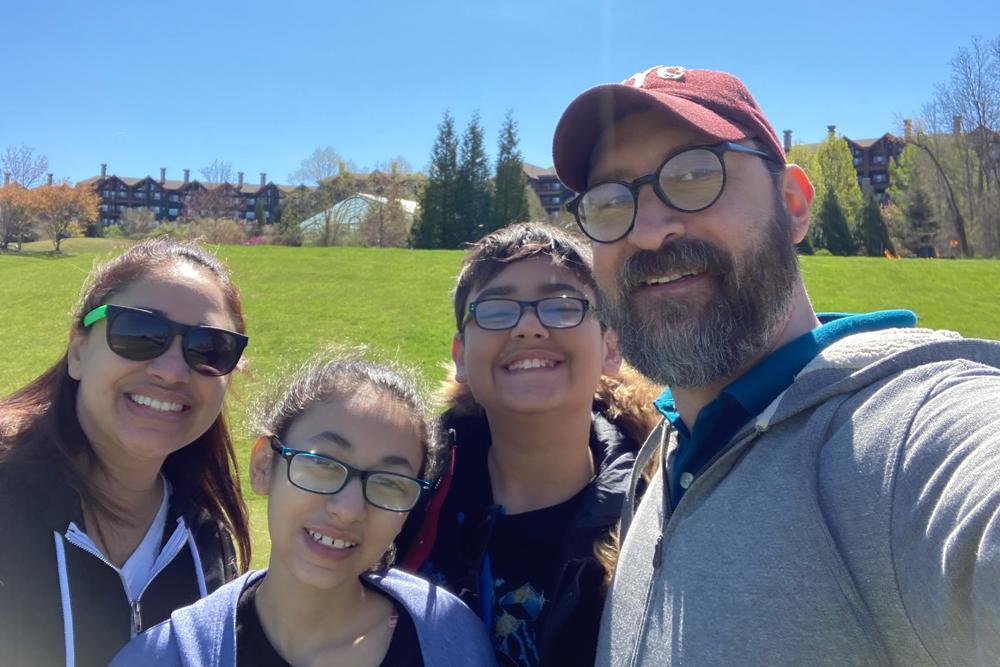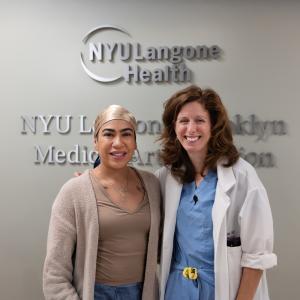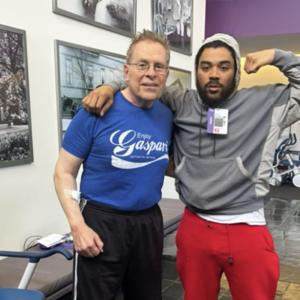The average age of Americans having a stroke is decreasing, and the same risk factors that lead to heart disease are to blame.

“When you have a stroke, every minute counts,” explains Dr. Aaron S. Lord, chief of neurology at NYU Langone Hospital—Brooklyn. “And so, the earlier you treat it, the better.”
Credit: Getty / SDI Productions
Brooklyn’s Michael Curcio thought he was in pretty good shape for a 47-year-old. Running, lifting weights, and sparring kept this stay-at-home dad and freelance artist physically fit. Then his health took an unexpected turn.
One day last December, Michael felt a headache coming on as he drove back to his Bay Ridge neighborhood. By the time he got home, the top band of his vision began to blur, as if he were looking at a pixelated image on a television screen. Minutes later, the room seemed to spin, and Michael collapsed, landing on the kitchen floor. “I felt this coldness starting in my stomach and spreading through my leg, my arm, my face,” he recalls. “I couldn’t lift my arm. I couldn’t lift my leg. And I told my wife, Jeannie, ‘Call 911.’”
Michael’s relative youth and Jeannie’s swift response set the stage for a positive outcome. An ambulance ferried the father of two to the Emergency Department of NYU Langone Hospital—Brooklyn, where he received state-of-the-art treatment. “When you have a stroke, every minute counts,” explains Aaron S. Lord, MD, the hospital’s chief of neurology. “And so, the earlier you treat it, the better.”
What Causes a Stroke?
Michael had an ischemic stroke, the type that occurs when a vessel supplying blood to the brain becomes blocked. Ischemic stroke accounts for 87 percent of all strokes, including the majority in people under 50.
Hemorrhagic stroke, or bleeding in the brain, is a less common type of stroke that can also occur in young adults. Those are on the rise as well, likely fueled by an increase in poorly controlled blood pressure.
In Michael’s case, a partial tear within the wall of his carotid artery, called a dissection, caused a blockage that temporarily restricted blood supply to his brain. Sometimes it occurs for no apparent reason; other times it’s due to a traumatic injury to the neck, certain medical conditions, or a family history of these types of tears. Dissection accounts for up to 25 percent of ischemic strokes in adults under 50.
Still, the majority of strokes in young people are tied to the same factors that put people at risk for heart disease, namely high blood pressure, high cholesterol, obesity, and type 2 diabetes. “That’s why the average age of stroke is decreasing in America; we’re developing risk factors at a younger age,” says Brandon Giglio, MD, director of vascular neurology at NYU Langone Hospital—Brooklyn.
Managing Your Risk Habit by Habit
Strokes are much more common in older adults. So why are people in their 20s, 30s, and 40s now suddenly at risk? Sedentary lifestyles are partly to blame. “People are working from home. They’re not even walking in the city or climbing subway stairs. They’re moving from their bed to their desk,” Dr. Giglio points out.
Grab-and-go diets heavy in processed foods are also contributing to the problem. Studies link high consumption of these foods with the risk of high blood pressure, diabetes, and obesity. “If young people could monitor the foods they’re consuming, that could help reduce these risks, and they’d be less likely to have a stroke,” Dr. Giglio notes.
Smoking, vaping, excess alcohol consumption, and illicit drug use are also associated with heightened stroke risk.
Joanna Marmo, BSN, RN, SCRN, stroke program coordinator at the hospital, urges young adults to get an annual checkup. Screening for underlying conditions can help with managing those risks and staving off a stroke.
Making a Comeback Requires a Plan
Since Michael and his wife acted quickly, doctors were able to deliver a clot-busting medication to help restore blood flow to his brain. The drug, called tenecteplase, must be given within 4.5 hours of the onset of symptoms.
A vascular team also performed thrombectomy, a minimally invasive procedure to extract a blood clot in his brain. And a stent was placed in the carotid artery in his neck where the dissection occurred to prop it open.
Thanks to the care team at the Comprehensive Stroke Center at NYU Langone Hospital—Brooklyn plus a slew of specialist appointments and ongoing physical therapy, Michael is making a comeback and managing his blood sugar, which is just on the cusp of prediabetes.
“When people heard that I had a stroke, everyone was in shock,” he recalls. “Most people know I take really good care of myself, and I said, ‘Listen, it can happen to anybody, no matter what kind of shape you’re in.’”
Recognizing the Signs of Stroke
Michael had all the telltale signs of stroke and, fortunately, a call to 911 led to a speedy response and a great outcome. His success story exemplifies why stroke experts want everyone to remember this acronym: BE FAST.
BE stands for balance and eyes, because stroke sometimes impairs a person’s gait or vision.
FAST is for face, arm, speech, and time. Facial droop, arm weakness, and slurred speech are signs that it’s time to call 911. “If you get any of these symptoms, BE FAST,” says Dr. Giglio.
Michael now realizes the sudden change in his vision was a sign of stroke. His biggest piece of advice to young adults? “Even if you don’t think you can have a stroke, go get yourself checked out right away.”


